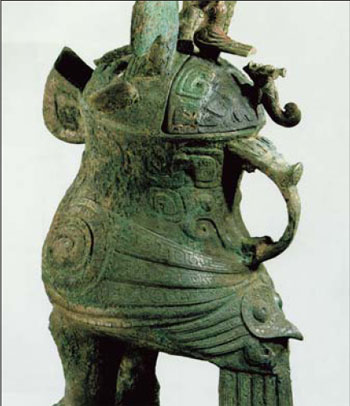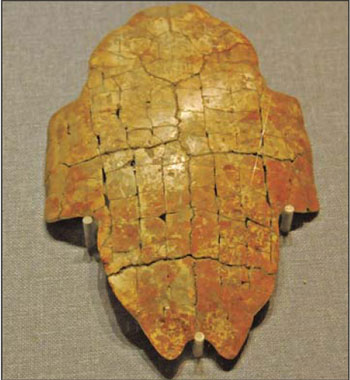

 |
|
An owl-shaped wine vessel excavated from |
 |
|
An oracle bone on display at the Henan Museum. |
It used to be thought that oracle bones were from dragons and as a result were ground up and sold at apothecaries for their supposed medicinal properties.
It wasn't until the late 19th century that it was found they were in fact animal bones or the undersides of turtles that were used to predict the future.
In the Shang Dynasty (c.16th century-11th century BC) kings were seen as the intermediaries between the gods and the people. The regents asked for divine advice about rituals and sacrifices, to get weather reports and find out about war, harvests and hunting.
The results of these divinations were then inscribed on the bones and turtle shells and these ideograms are the earliest known form of Chinese writing.
Tens of thousands of oracle bones have been dug up, but only about half of the ideograms have been deciphered.
The most productive oracle bone archeological site is the Yinxu Ruins in Anyang, a Shang capital for 250 years in northern Henan, which was listed as a UNESCO world heritage site in 2006.
Henan Museum in Zhengzhou also has a number of oracle bones on display, with several of the ideograms translated into modern Chinese.
Other items in the museum's collection, which date as far back as the first dynasty, the Xia (c.21st century-16th century BC), include bronze, pottery and stone engravings that show the development of Chinese writing throughout the ages.